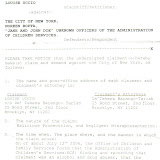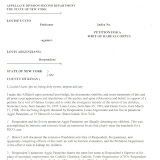Today folks we have a guest blogger N. - she also gives her two cents or dollar fifty worth..
May I welocome one of my dear friends N. This post is here at her request..
(she didn't mention if it was ok to use her full name - if that changes I will add it)
~~~~~~~~~~~~~~~~~~~~~~~~~~~~~~~~~~~~~~~~~~~~~~~~
Ontario County Courthouse
Ontario County Courthouse and The Susan B. Anthony Trial
By Anita Womack-Weidner
Location: Main Street, Canandaigua, N.Y.
Houses: Supreme, County and Surrogate’s Courts and Commissioner of
Jurors
Judicial District: Seventh
Built: 1858, expanded and renovated 1908
Architects: Henry Searl (also known as Searle) was the first architect
of the present Ontario County Courthouse. Searl went on to be the
supervising architect of the U.S. Treasury and designed the master
campus plan for Howard University in Washington, D.C. John Foster
Warner, a Rochester-based architect and the son of the prominent
architect A.J. Warner, designed the expansion.
Architecture: The Ontario County Courthouse is a two-story Greek
Revival building. Its external walls were constructed of brick above
stone foundation walls and a limestone water table. The brick walls were
surfaced with mastic. Officials believe the courthouse as originally
built was covered by a low-pitched cross-gabled roof, probably sheathed
with tin pans. A large hemispherical dome with an octagonal base rose
about the intersection of these roofs. The base of the dome, which
appears to have housed a bell, was pierced by louvered openings that
would have allowed for the transmission of sound. The dome was also
sheathed with metal pans and surmounted by an octagonal cupola, covered
by a small dome. Atop the dome stood a 12-foot statue of “Justice,”
carved from doweled wooden planks.
Historic Status: On the National Registry of Historic Places, as well
as the state and local registry. Ontario County Courthouse was just 15
years old when it was selected as the site of the Susan B. Anthony
trial.
The Susan B. Anthony Trial
On June 17, 1873, suffragette Susan B. Anthony walked through the doors
of the Ontario County Courthouse and under its large, gold-colored dome
to stand trial for “illegal voting” in a federal election because
she was a woman.
Anthony had campaigned for the re-election of Ulysses S. Grant and his
Republican Party platform that stated it was “mindful of its
obligations to the women of America.” In 1872 women did not have the
right to vote, but Anthony and 50 suffragettes attempted to register in
Rochester anyway. Everyone was turned away except for the 15 women who
went to the 8th Ward registration office with Anthony. The women were
permitted to register in Rochester after arguing their case by reading
the 14th and 15th Amendments to the Constitution and provisions of the
New York State election law, despite the strong objections of election
officials, according to the book Ontario County Courthouse: Its History
and Restoration. On Election Day, Nov. 5, the 16 women voted. Anthony is
said to have voted a straight Republican ticket. Arrest warrants were
issued on Thanksgiving Day for all of the women, and in January 1873 a
federal grand jury indicted Anthony. Officials declined to prosecute the
other women.
Anthony initiated a speaking tour in the Midwest and Rochester,
bringing publicity to her upcoming trial. The pre-trial publicity forced
the United States attorney to ask that the venue be changed from
Rochester. The Circuit Court granted the request, and Ontario County
Courthouse was selected as the new venue for the trial.
The trial was greeted with a packed courtroom that included former
President Millard Fillmore. Anthony’s defense counselors were Henry R.
Seldon, a former judge of the New York State Court of Appeals, and John
Van Voorhis. The prosecutor was Richard Crowley. Anthony pleaded
innocent to the charges.
During her trial, Anthony was barred from testifying, and Judge Ward
Hunt instructed the jury to find her guilty. She was found guilty the
next day. Judge Hunt surprisingly asked Anthony if she had anything to
say before her punishment was imposed. She did.
“Yes, your Honor, I have many things to say; for in your ordered
verdict of guilty, you have trampled underfoot every vital principle of
our government. My natural rights, my civil rights, my political rights
are all alike ignored. Robbed of the fundamental privileges of
citizenship, I am degraded from the status of a citizen to that of a
subject; not only myself individually, but all of my sex are, by your
Honor’s verdict, doomed to political subjection under this so-called
Republican government. … [H]ad your Honor submitted my case to the jury,
as clearly your duty, even then I should have had just cause to protest,
for not one of those men was my peer, but each and every man of them was
a political superior, hence in no way my peer.”
Anthony refused to pay her $100 fine—her only sentence—and
officials never pursued the case. However, the election inspectors who
allowed her and the other women to vote were similarly tried, convicted,
fined and imprisoned. Gifts of money poured in for Anthony, and she used
the funds to pay her attorney and the fines of the election inspectors
who had been prosecuted, as well as to print a pamphlet of the
proceedings of her trial, which was sent to newspapers across the
country.
President Ulysses S. Grant later pardoned the election inspectors.
While the trial lasted for just two days, its effect would be
long-lasting and far-reaching. Anthony would spend the rest of her life
fighting for the right of American women to vote. On Aug. 26, 1920—14
years after her death—the 19th Amendment to the Constitution was
adopted and women won the right to vote.
~~~~~~~~~~~~~~~~~~~~~~~~~~~~~~~~~~~~~~~~~~~~~~~~~~
She suggested I could write something or antother in my two cents ..
~~~~~~~~~~~~~~~~~~~~~~~~~~~~~~~~~~~~~~~~~~~~~~~~~~~
Or use my (her) two cents.
The account of the trial of Susan B. Anthony happens to be a highlighted story on the OCA official website.
Can we only grasp the obvious after someone has already been dead for
fourteen years?
Can the court system only respect a visionary if everyone else has for
one hundred years?
What about acknowledging this present problem that is not life serving or honoring our Constitution or the Declaration of Human Rights issued by the UN or the Ten
Commandmentsor probably the Code of Hammurabi for God's sake.
OCA and Chief Judge Jonathan Lippman, is it time to get the lead out in overcoming the courts' blindness to the human cruellty of aiding and abetting the alienating parent in instilling hatred and sabotage of parental relationship by means of court empowered parental alienation?
Is it time to stop ignoring and obstructing relationship for mothers and
fathers who only want to extend love and let their children be allowed
to love them back?
Subscribe to:
Post Comments (Atom)























No comments:
Post a Comment